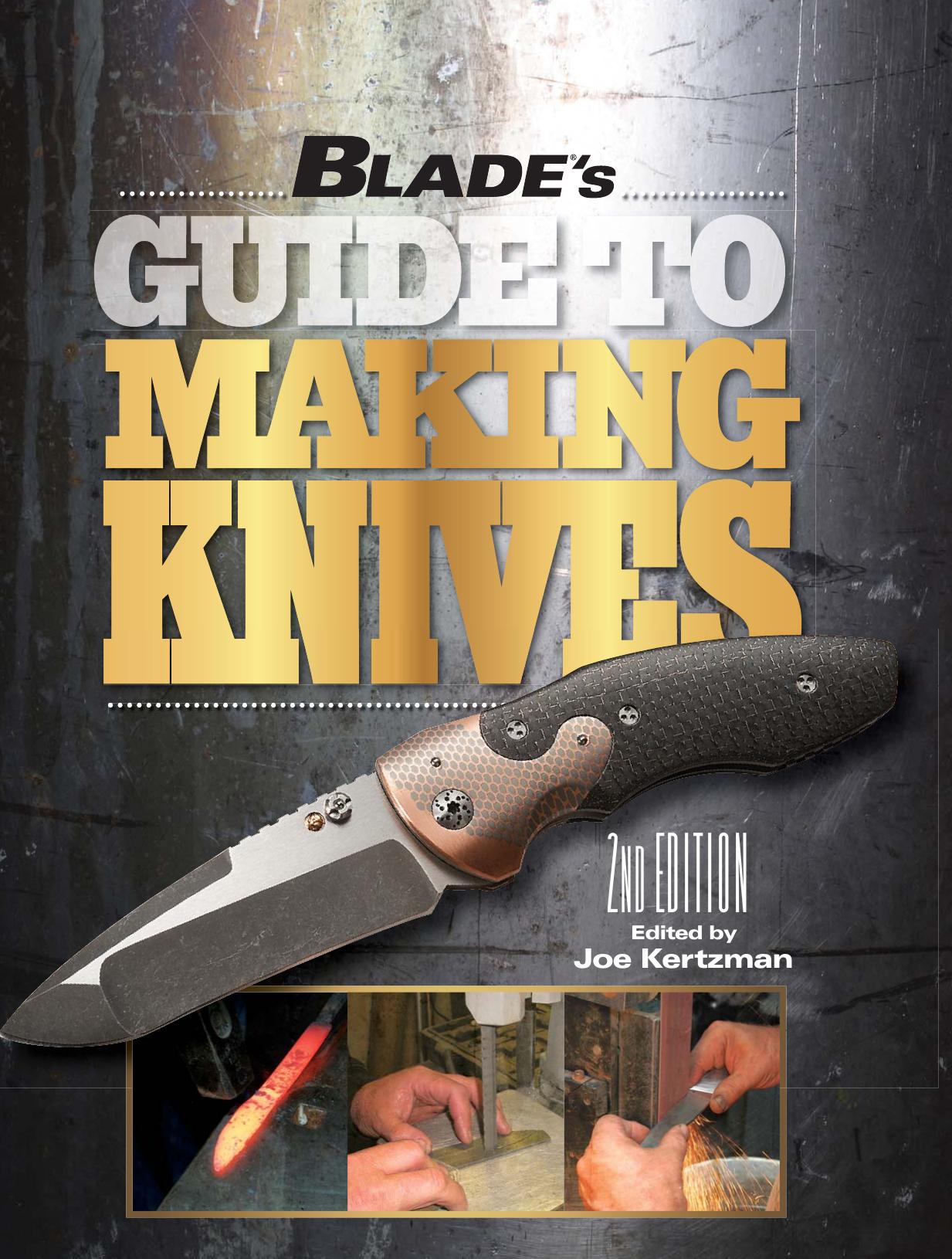BLADE's Guide to Making Knives by Joe Kertzman

Author:Joe Kertzman [Kertzman, Joe]
Language: eng
Format: epub, pdf
Tags: Crafts; Hobbies & Home, Antiques & Collectibles, Firearms & Weapons, Crafts & Hobbies, Metal Work, Home Improvement & Design, How-To & Home Improvements, Power Tools, Reference, Encyclopedias & Subject Guides
ISBN: 9781440228599
Amazon: B007O2M3ES
Publisher: Krause Publications
Published: 2012-04-27T04:00:00+00:00
Wootz pattern by Alfred Pendray
Their work together is quite remarkable. A country bladesmith from Florida working with a metallurgist from Iowa had solved a mystery that had eluded science for centuries.
Bladesmithing in the US was bootstrapped into existence by a handful of craftsmen, driven to learn and eager to share their enthusiasm and hard earned knowledge with all others who were attracted to it. Gathering together at hammer-ins, they succeeded in teaching each other through lecture and demonstration. The earliest of these gatherings was held at the field campus of the University of New York at Ashokan. The Ashokan hammer-in or bladesmithing symposium is still an annual event and celebrated its 30 anniversary in 2011.
Alfred Pendray made the trip from Florida to Ashokan with a case of crucibles, iron, and excitement about his work and he shared it all with those who were lucky enough to be present. While his work with wootz was interesting to most, it was Al’s new-found metallurgical knowledge gained by working with Dr. Verhoeven that was a benefit to all. Al was the perfect teacher to pass on this new way of looking at what was happening when steel was heated in the fire. He had the practical and intuitive sense of a good smith, but now he shared with us the vocabulary to explain and describe what was taking place. Phase diagrams, time temperature transformation charts, face-centered cubic crystals, and suddenly bladesmithing entered a new level of complexity. Steel became much more than bar stock and the true extent of its mysteries was revealed.
Al Pendray’s work with wootz opened the door to history as well. With visions of Assad Allah, the famous Persian smith, watching us forge, bladesmiths of the 20th century became aware of their heritage. With new tools and technology, the new bladesmiths had something to contribute as well. The craft was not just a romantic notion, it was a field of study.
Scholars, scientists, and craftsmen were making new discoveries and their work fed into the new stream of knowledge that was developing around wootz. According to Ann Feuerbach, Hofstra University, Anthropology, “Discussions and experiments on various aspects of crucible Damascus steel production are now often a part of conferences from such diverse fields from material science and blacksmithing to arms collecting, history, archaeology, and anthropology. It is by combining the information from all these diverse disciplines that crucible steel continues to help us understand not only the people and technology of the past, but also the behavior of materials today. It appears that crucible Damascus steel will keep inspiring people in the future.” JOM, May 2006
One of the smiths who developed an early interest in steel making was Ric Furrer, Door County Forgeworks, Sturgeon Bay, WI. Ric made his first iron smelt while taking a class from Prof. J. Mark Kenoyer, University of Wisconsin. His dogged research and experimentation has brought him in contact with the leading experts from many disciplines. He demonstrated for the Smithsonian Institution in Washington, DC, in 2002 at the “Silk Road Festival,” as well as many hammer-ins and symposiums around the world.
Download
BLADE's Guide to Making Knives by Joe Kertzman.pdf
This site does not store any files on its server. We only index and link to content provided by other sites. Please contact the content providers to delete copyright contents if any and email us, we'll remove relevant links or contents immediately.
The Body: A Guide for Occupants by Bill Bryson(4973)
Audition by Ryu Murakami(4840)
Adulting by Kelly Williams Brown(4484)
Housekeeping by Marilynne Robinson(4329)
Be in a Treehouse by Pete Nelson(3941)
Zero Waste Home by Bea Johnson(3777)
Seriously... I'm Kidding by Ellen DeGeneres(3574)
Better Homes and Gardens New Cookbook by Better Homes & Gardens(3523)
The Healing Self by Deepak Chopra(3473)
Barkskins by Annie Proulx(3298)
Hedgerow by John Wright(3273)
The Cellar by Natasha Preston(3259)
Spark Joy by Marie Kondo(3246)
The Genius of Japanese Carpentry by Azby Brown(3223)
The Life-Changing Magic Of Tidying Up- The Japanese Art Of Decluttering And Organizing (v5.0) by Marie Kondo(3211)
120 Days of Sodom by Marquis de Sade(3177)
Work Clean by Dan Charnas(3048)
The Book of Numbers by Peter Bentley(2907)
A Monk's Guide to a Clean House and Mind by Shoukei Matsumoto(2866)
